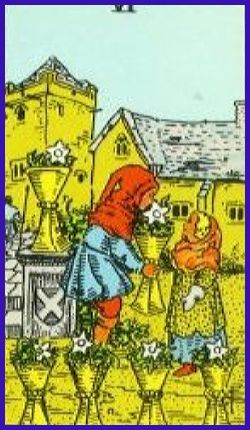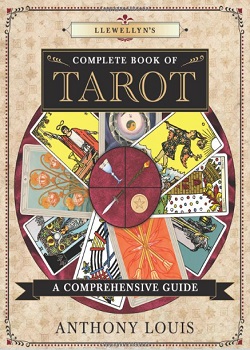Your Chosen Card – Six of Cups Upright Rider Waite Deck

When upright, the nostalgic Six of Cups refers to pleasant memories and enjoyable relationships returning from the past. It can herald a friendly reunion or the revival of a former friendship or love interest. You may find yourself exchanging gifts or sharing sexual pleasures with someone you care about. This is a card of joy, harmony, and satisfaction. Traditionally it is a marker of things past.
Keywords Upright: In the past, happy memories, nostalgia, longing, reunion, harmony, pleasure, enjoyment, betterment, gift giving, old friends, renewal of old relationships, a blast from the past. Traditionally the Six of Cups meant ‘in the past’ and the Six of Coins referred to ‘in the now’ – we tend to reminisce about the good old days when we sip wine from a cup. The reversed Six of Cups traditionally meant ‘in the future’ – perhaps because the inverted cups do not yet hold the wine we will drink at a future time. These traditional ‘past-present-future’ meanings derive from the fortune-telling history of the tarot.
Timing: 10 Scorpio20 Scorpio. Tropical, 3 November12 November. Sidereal, 26 November5 December.
Astrology: The mighty Sun in the second decan of watery Scorpio, realm of the Waite King/Thoth Prince of Cups (Air of Water) and Death (Scorpio).
Number Symbolism: 6 – harmony, communication, sharing, compassion.
Rider Waite: Children in an old garden, their cups filled with flowers. Divinatory Meanings: A card of the past and of memories, looking back, as – for example – on childhood; happiness, enjoyment, but coming rather from the past; things that have vanished. Another reading reverses this, giving new relations, new knowledge, new environment, and then the children are disporting in an unfamiliar precinct; (R) the future, renewal, that which will come to pass presently.
When Six of Cups is upright you can pretty much take it that life is going well but that’s when life takes us by surprise. If Six of Cups is unclear it may help to choose a card from the Major Arcana to provide more insight into what it is Six of Cups is trying to tell you. If you had a particular issue in mind, or want to seek clarification on something else, you can also choose again to get more guidance.

This chosen card is part of your upright card reading for Six of Cups using cards from the Rider Waite Tarot Deck. You will find many more tarot pages that will be of great help if you need tarot card meanings. Use the search at the bottom of the page. We have some amazing tarot books for you to browse. Please see below.
Here are some snippets from a few of my favorite books

Book Details
Creative Tarot: Which brings us to today. There have been many successful tarot decks since the Rider-Waite-Smith, like the Aquarius deck and the Morgan-Greer, both developed in the 1970s when the New Age movement started to gain mainstream acceptability, but almost all have followed the illustrative choices that Smith made. Its all but impossible to overstate her importance in how we use and think about the tarot today.
Complete Book of Tarot: The tarot always gives a correct answer, and any errors in a tarot reading are due to the practitioners failure to understand what the cards are saying, but
- Do get in touch if you looked for Six of Cups and we don’t have it listed. We would be more than happy to source the information for you. We hope you visit again for more online tarot information!
Tarot Triumphs: The Fool (or Jester) and the Magician are strong candidates for jongleur figures for obvious reasons of clowning and performing magic tricks. So is the Hanged Man, taking my preferred interpretation of him as an acrobat demonstrating his balancing tricks. Strength, the woman taming the lion, could be linked to the female jongleurs of the travelers’ bands, whose acts included animal taming. The World, a scantily clad dancer, is also a possibility. Death appeared in similar guise in play-acting and spectacles of the time, particularly in the Dance of Death scenario, so he could have been part of jongleur repertoire. And perhaps a toppling Tower and a rotating wheel might have been part of the props, or, at the very least, a feature in the stories and plays offered. The Wheel of Fortune could have been a gambling game, offered at shows just as people still pick out lucky numbers from a revolving drum at fairs today. The cultural memories of jongleurs and their performances would be likely to linger on after their high point of fame and provide atmospheric, recognizable images that would work well in the Tarot mix. At any rate, whether jongleurs played a part as folk memories, popular performers, or even creators of the first Tarot cards, I put them forward for consideration in the early history of Tarot. The vernacular also brings us more to the heart and spirit of Tarot; although its history and imagery place it among the nobility as well, I believe Tarot embodies a folk culture that may have been there all along and was not just a place where Tarot ended up in later centuries.